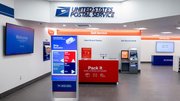Article
Gov't agencies seek to sequester savings with self-service
Could the sequester cuts lead to self-service gains in public sector deployments?

March 14, 2013 by Natalie Gagliordi — Editor of KioskMarketplace.com, Networld Media Group
The sequester — the ominous yet ambiguous name for the recent government spending cuts — has settled into its place in the current American dialogue. Now that the deadline to avoid sequestration has passed, multiple industries are on high alert, bracing for the fallout from the impending budgetary shortfall.
But if lower overhead and greater efficiency become the new recipe for government agencies, could self-service be the key ingredient? According to some, it already is.
"Governments across the country are feeling the impact of our fiscal crisis," said Chris Gilder, CEO of Meridian Zero Degrees, a company that provides design, consulting and software for self-service solutions. "Demands for service remain while budgets are shrinking. Self-service solutions help bridge the gap between consumer expectations and economic reality."
With the U.S. economy more than four years into a financial crisis, kiosk companies already have experienced an increase in government demand for self-service.
"Common in many of our recent government-funded projects has been varying degrees of self check-in," said Cory Sloan, sales manager at Phoenix Kiosk. "From a customer queuing application to scanning your own finance-related documents, many levels of government are using self-service to ease the burden and help organize their visitors."
Another growing trend in government deployments has been bill-payment kiosks, Sloan said, as local governments seek to automate the process to pay anything from a traffic fine to a water bill.
"When government offices are able to automate check-in or payment collection processes, it allows them to re-allocate resources to areas of need that are not able to take advantage of self-service so they can continue to provide a high level of service to the public," he said.
Jeff Goldstein, the VP of sales at SeePoint Technologies, said his company has noticed a similar uptick in the demand for government self-service solutions. Wayfinding kiosks with directory software, utility bill-payment kiosks and queuing applications — all of which alleviate the employee man-hour consumption of face-to-face interactions — have been services in high demand by government agencies, Goldstein said.
"We are doing a project for Los Angeles County Superior Court system that allows folks to pay traffic tickets at our kiosks which are located at the various court houses in the area," Goldstein said. "Saves both time and money for the county."
Airport security
Airports are a hot talking point in the wake of the sequester, with forecasts that TSA cuts of about $323 million will send security lines spiraling out of control. However, airports far exceed the norm for self-service offerings, from check-in kiosks to automated baggage drops — even automated security checkpoints.
The Global Entry program, which started in 2009 at the Dallas/Fort-Worth International Airport, expedites the security process during international travel. Program members must fulfill requirements such as clean background checks, valid documentation and a face-to-face interview with a customs agent. Once a member, travelers can use their fingerprint to bypass the passport lines when entering the country at DFW and 43 other airports in the U.S.
The success of the program could lead to a broader application in airport security, offering a line-busting substitute to traditional security means.
"The more people we can get signed up for these programs, the better our lines will be," DFW spokesman David Magaña said in a recent interview.
No money, no kiosks
Not everyone in the industry is sold on the idea that self-service solutions will do much to ease the burdens brought on by sequester cuts. Francie Mendelsohn, president of the kiosk consulting firm Summit Research Associates, said it's unlikely to see more kiosk deployments in the aftermath of spending cuts.
"If the kiosks are not already in place and working well, they will not have money to implement them now," she said.
And while government need for kiosks may be increasing, such deployments are nothing new, said Terri McClelland, CEO of the San Antonio-based kiosk company DynaTouch. McClelland said her company has been working on government kiosk projects since the late 1980s, but added that "government agencies need self-service kiosks now more than ever."
Read more about bill-payment kiosks.
Photo by images of money.












